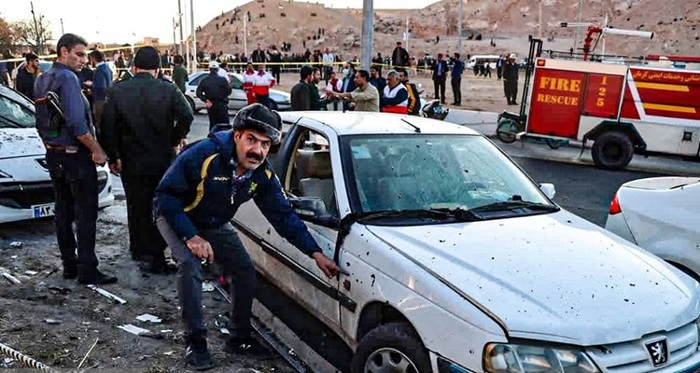
In the wake of the bombing at a ceremony in Kerman, Iran, commemorating the slain Quds Force commander Qassem Soleimani, confusion and controversy continue to deepen.
The attack, which resulted in dozens of deaths, has been shrouded in uncertainty, with conflicting statements from Iranian state officials adding to the mystery. Immediately after the news broke, Iranians domestically and globally took to social media to express suspicion towards their government. Drawing parallels with historical incidents like the 1994 Imam Reza Shrine bombing, many accused the regime of orchestrating the attack. This unanimous suspicion from various political backgrounds points to a deep mistrust in the government.
Several questions emerged about the Kerman incident. The absence of Soleimani’s daughter, along with key IRGC leaders and state figures, from the main ceremony has been a point of contention. Further doubts were raised by the majority of victims being locals and schoolchildren, and the alteration of the initially announced death toll from 103 to a lower number.
Making Sense of #Iranian Officials’ Ambiguous Assertions about #October7 Attackshttps://t.co/s7v6R0Q2ue
— NCRI-FAC (@iran_policy) January 7, 2024
On January 7, while state-run Mehr News Agency claimed the perpetrators were caught, Agence France Presse reported that the bombings exposed Iran’s internal vulnerabilities, contradicting the government’s narrative of strength and control.
The same day, Ali Tavkolli, head of the Judicial Organization of the Armed Forces in Kerman Province, claimed that a larger plot involving 64 bombs across Iran was foiled, and the suspects arrested. He specifically mentioned 16 bombs discovered in Kerman, targeting Soleimani’s shrine. These statements, meant to showcase regime vigilance, inadvertently highlighted security lapses.
Within 24 hours, the Fars news agency, citing the IRGC, contradicted Tavkolli’s claim, labeling it false news meant to create insecurity. This contradiction within the regime’s own channels reflects the turmoil and attempts to control the narrative.
The regime’s reaction to public outcry over the bombings and the absence of significant figures at the ceremony was to threaten action against those spreading “lies” online. Ali Tavkolli warned of repercussions for those “stirring up people’s minds” on the internet. Following this, state-run Tabnak website reported the arrest of several social media users for allegedly insulting the Kerman martyrs, indicating the regime’s sensitivity to public opinion.
#Iranian Regime’s Fourfold Objectives in the #GazaCrisishttps://t.co/UXfRouGv2b
— NCRI-FAC (@iran_policy) November 9, 2023
During a parliamentary session, Speaker Mohammad-Baqer Qalibaf addressed the public’s discontent, accusing some of downplaying the role of the US and Israel while undermining national unity against terrorism. He emphasized adherence to the Supreme Leader’s directives in responding to the incident.
The regime’s attempts to control the narrative face the challenge of a populace weary of past deceptions, including the PS 752 downing and unexpected economic policies. Esmail Gerami-Moghadam, in an interview with Etemad, highlighted the diverse public sentiments, noting that some are contemplating regime overthrow. This encapsulates the varied and intense reactions among Iranians to the ongoing political and social crises.

MEK Iran (follow us on Twitter and Facebook), Maryam Rajavi’s on her site, Twitter & Facebook, NCRI (Twitter & Facebook), and People’s Mojahedin Organization of Iran – MEK IRAN – YouTu
